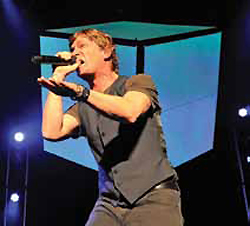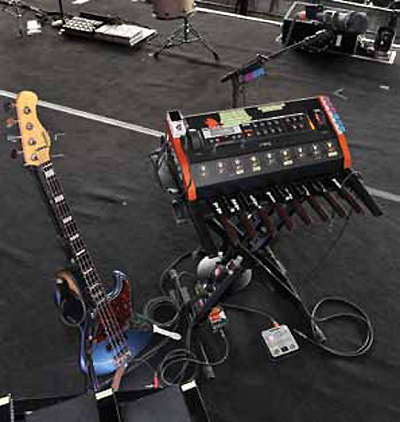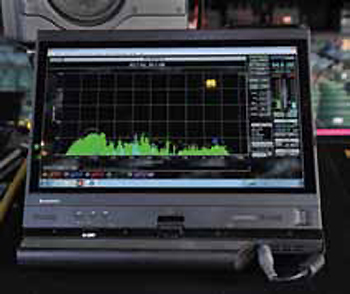
Along with the lack of stage volume on the MB20 stage, also absent is the presence of a lot of mics.
Guitars – which are prolific and change constantly between Fender, Gretsch, semi-hollow bodies, and all kinds of vintage models – are all on Palmer direct boxes. DIs were also chosen for keys, which include a Hammond B3 using a miked Leslie mounted in an iso-box, and a grand piano shell with a sampling keyboard inside.
As a general rule, everything that has an amplifier goes into a DI except for one amp that has a mic on it for a single song. Aside from that and vocals, the only other mics onstage are on the drum kit, and these are an eclectic lot including a Shure Beta 91 on the inside of the kick drum, a Telefunken M82 on the outside, a Telefunken M80 on snare top, AKG 414 on snare bottom, Neumann KM 184 on high-hat and ride cymbal, and overhead AKG 414s.
“Because of the lack of stage volume,” notes Francis, “we had the luxury of deploying the mics we do use purely for how they sounded, not how they performed within the situations they were subjected to.”
Constant Evolution
For the band, sound check is a time to work up new material, or explore the possibilities of doing new cover songs suggested by fans online. The tour’s set list has constantly evolved along its entire route, gaining and losing numbers based many times upon how it performs in sound check.

“Every musician has a certain comfort level they need to maintain onstage,” Francis explains. “If sound check is vital to that process, then by all means we’ll do it. Truth be told, however, I don’t change a lot of things during sound check. I’ll simply dial in what I need to correct for the room, and the rest I leave alone because no one plays or sings the same way later during the actual show. All the attacks and releases will be different.
“I’ll basically humor the band at sound check and get them to a point where they’re comfortable, then make any necessary changes during the first song,” he continues. “If I changed everything at sound check I’d have to change it again later anyway. So typically I just smile and accommodate.”
Tuning the PA is a science taking 15 minutes on average, with Francis relying upon a tablet and Rational Acoustics Smaart (SmaartLive, specifically) to get the job done.
After about two minutes of pink noise trials to smooth things out and build a general template of EQ he’s happy with, he switches to music, walking the seating area in its entirety and back to his mix position while playing the same three songs over and over, until, in his own words, “everyone gets sick of them.” Adjustments are made on-the-fly, with his tablet linking wirelessly with the Lake processing rack onstage.
“It’s a one-team effort from Clair on up,” Francis concludes. “I have to admit that being on this tour has me absolutely spoiled rotten. The band and the environment they create around them couldn’t be better, and the show’s unified approach brings the best out in us so that we give the best possible show we can to the audience every night.
“Everyone brings their A-game to the effort, and it shows,” he concludes. “That’s always been the history behind these productions. I can’t tell you how lucky I was to land here.”
Gregory A. DeTogne is a writer and editor who has served the pro audio industry for the past 30 years.

